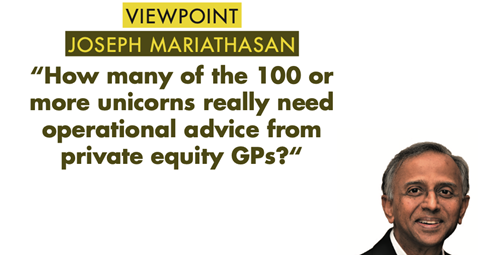The many thousands of fast-growing small and mid-sized companies globally represent the potential giants of tomorrow, and also provide a fertile hunting ground for those seeking superior investment opportunities.
For companies, getting access to investment capital can be via the traditional route of listing on capital markets, or else by seeking ever-larger amounts through the private markets through private equity funds.
The US and UK have led the world in the development of capital markets, but one ongoing trend may give reasons for concern.
The actual number of US listed companies has almost halved from its peak of about 8,000 in 1996 to just above 4,000 today. Meanwhile, the private equity mid-market buyout market, which essentially targets the same size category of stocks, has raised record amounts.
While there has been an enthralling ongoing pas de deux between the public and private markets in the US, with investors acting as the cheering audience for the past decade or more, it appears that private markets have become the dominant partner.
The reasons for the growing predominance of private equity funding over public listing date back over a couple of decades, with cheap credit and the effects of the Sarbanes-Oxley Act of 2002 making the dance more frenzied.
For many small companies, the cost burden of increased reporting brings a lot of pain and diverts management attention from tracking the actual day-to-day business. Remaining private for longer has become the favoured choice, but with implications for asset allocators and wealth managers.
For investors, what really matters is the difference in return expectations and the difference in fees between private and public markets. The evidence appears to show a convergence of returns between the two over the past decade, even if the top quartile PE managers have managed to buck the trend and still produce robust risk-adjusted returns. Yet the fee differential remains, making PE investment look relatively expensive for the average pension fund.

PE general partners like to emphasise their ability to add value to their investee companies. That may be true for many of the smaller acquisitions but, as Willis Towers Watson (WTW) argues, the current PE model really works for the small to medium end of the market. When it comes to larger companies, investors might require a different approach to address that investment opportunity.
How many of the 100 or more unicorns (private companies with a greater than $1bn market value) really need operational advice from PE GPs? Does Elon Musk really require advice from a private equity fund manager on how to run SpaceX?
If PE investment can also be undertaken in certain sectors on a passive basis, that will, as with listed equity index funds, result in a rapid reduction in fees. WTW is exploring the idea of creating ‘passive’ PE funds in collaboration with selected existing listed equity managers. The fee structure could then be dramatically reduced, potentially even to meet the 75bps thresholds for UK DC schemes. That would indeed, be a dramatic development.
Joseph Mariathasan
Contributing Editor
Joseph.mariathasan@ipe.com


















No comments yet